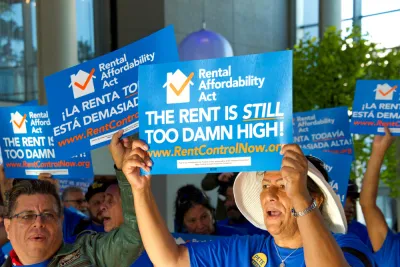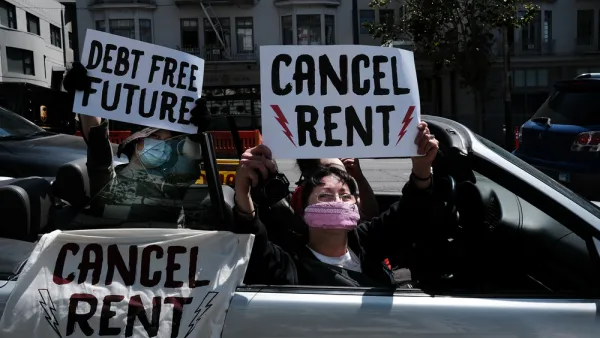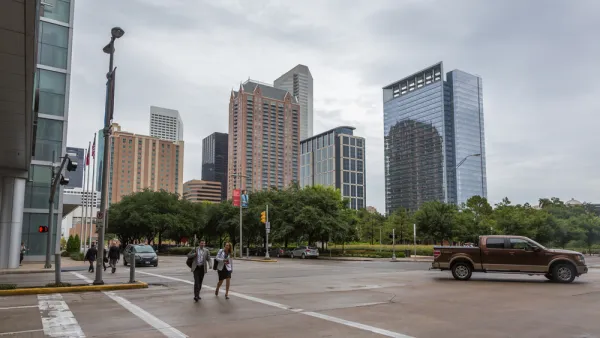"This is not about reward and punishment … It’s about speeding up effective relief for families in need of housing security and eviction protection."

It’s been nearly a year since Congress passed $25 billion for the first round of Emergency Rental Assistance (ERA1) and seven months since it allocated another $21.6 billion in the American Rescue Plan Act (ERA2). In the eyes of the Department of the Treasury, that’s plenty of time for states and cities to get successful emergency rent relief programs up and running. But come November, the Treasury department is planning on taking that money back from localities that haven’t done a good job getting rent relief out.
The federal rent relief effort has been much maligned for its painfully slow pace getting money into the hands of desperate renters. By July, only 11 percent of the $46.7 billion in available rental relief had been spent, because state and local officials struggled to create new rent relief programs from scratch, hire staff to process applications, get landlords to participate, among other snags. In the months since, distribution has accelerated, thanks in part to a push from Treasury for adjustments that reduce barriers—things like allowing renters to self-attest that they need the funds, reducing the amount of paperwork in applications, and partnering with community-based organizations to get the word out.
Still, as of late-October, states have spent or committed to spending only about 48 percent of the $25 billion available in ERA1 funds.
But that 48 percent belies the wildly disparate performance of the best and worst state and local rent relief programs around the country. The New York State rent relief program has paid out and approved payment of 100 percent of its ERA1 funds. Connecticut has spent and promised 95 percent of its ERA1 funds. Texas and Illinois are at 83 percent and 79 percent, respectively. On the other side of the coin, the Dakotas, Arkansas, Tennessee, and Nebraska are among the worst performers, having spent and obligated single-digit percentages of their ERA money. There are similar gaps between the best and worst city and state rent relief programs.
With some $15 billion left to distribute from the first round of ERA and another $21.6 billion in ERA2 available, the feds are now working to ensure that money isn’t languishing in states and cities that have shown they’re unable or unwilling to quickly help renters. On Oct. 15, Treasury began requiring low-performing programs to submit improvement plans that show how they’ll speed up distribution. For the truly dismal programs, Treasury will start recapturing and redistributing rent relief funds in November.
“This is not about reward and punishment,” said White House American Rescue Plan Coordinator Gene Sperling during a September webinar put on by the National Low Income Housing Coalition (NLIHC). “It’s about speeding up effective relief for families in need of housing security and eviction protection.”
Improvement for Some; Lost Funds for Others
For the purposes of ERA recapture and redistribution, Treasury divides rent relief programs into three buckets: those that have spent or committed more than ...
FULL STORY: As Rent Relief Efforts Drag on, Treasury is Redistributing Funds

Analysis: Cybertruck Fatality Rate Far Exceeds That of Ford Pinto
The Tesla Cybertruck was recalled seven times last year.

National Parks Layoffs Will Cause Communities to Lose Billions
Thousands of essential park workers were laid off this week, just before the busy spring break season.

Retro-silient?: America’s First “Eco-burb,” The Woodlands Turns 50
A master-planned community north of Houston offers lessons on green infrastructure and resilient design, but falls short of its founder’s lofty affordability and walkability goals.

Test News Post 1
This is a summary

Analysis: Cybertruck Fatality Rate Far Exceeds That of Ford Pinto
The Tesla Cybertruck was recalled seven times last year.

Test News Headline 46
Test for the image on the front page.
Urban Design for Planners 1: Software Tools
This six-course series explores essential urban design concepts using open source software and equips planners with the tools they need to participate fully in the urban design process.
Planning for Universal Design
Learn the tools for implementing Universal Design in planning regulations.
EMC Planning Group, Inc.
Planetizen
Planetizen
Mpact (formerly Rail~Volution)
Great Falls Development Authority, Inc.
HUDs Office of Policy Development and Research
NYU Wagner Graduate School of Public Service




























